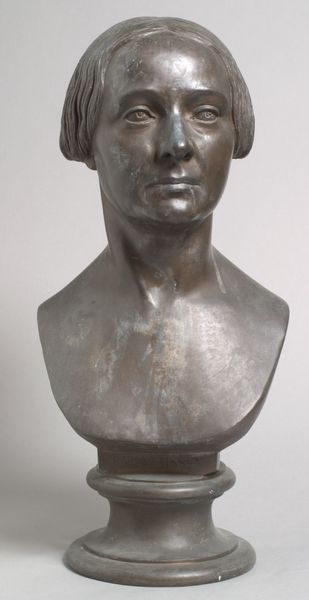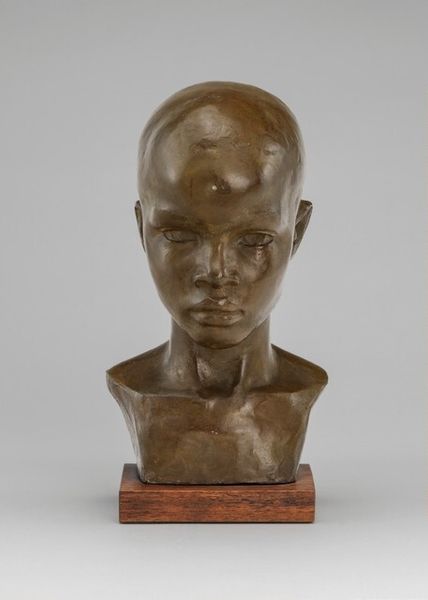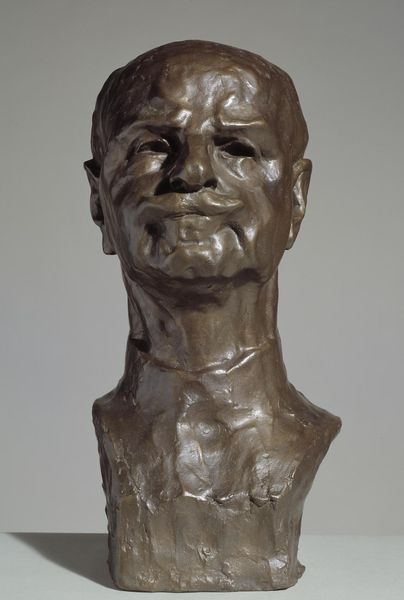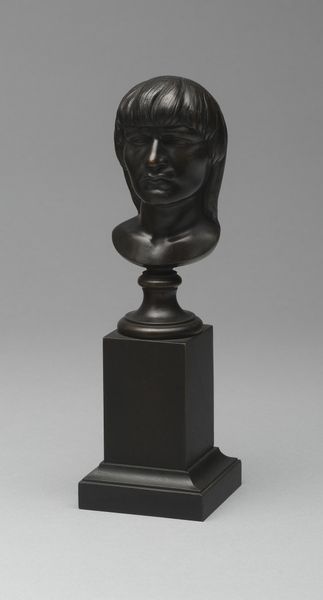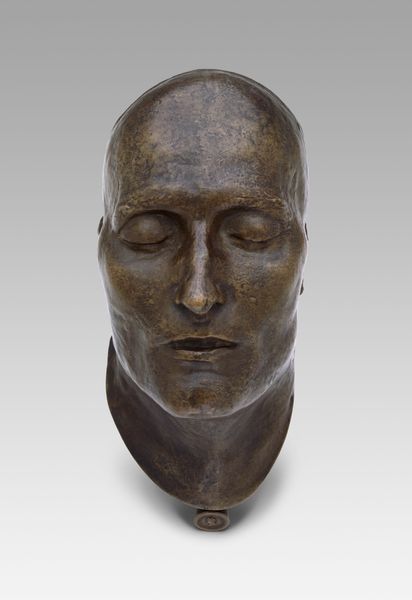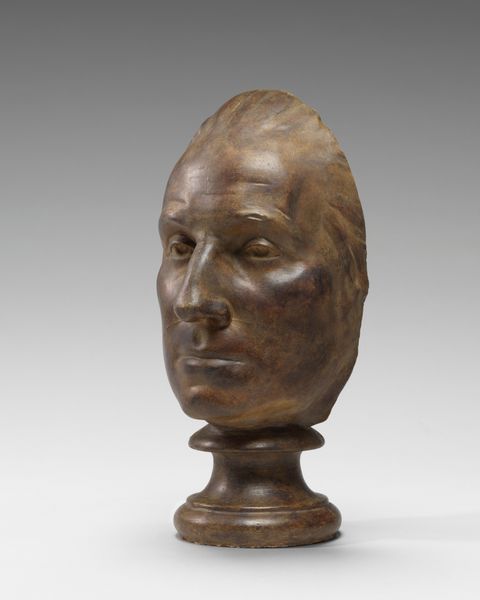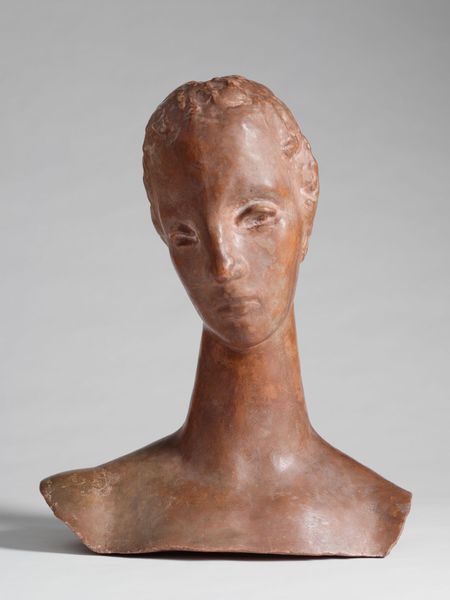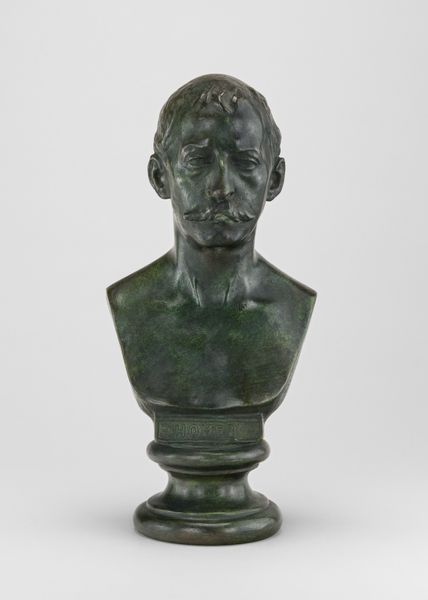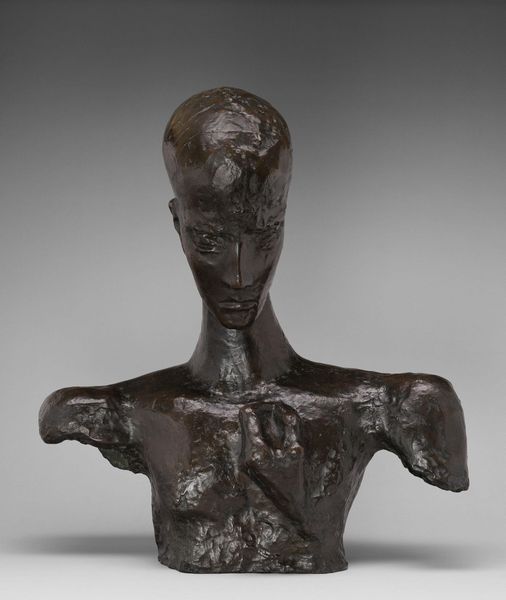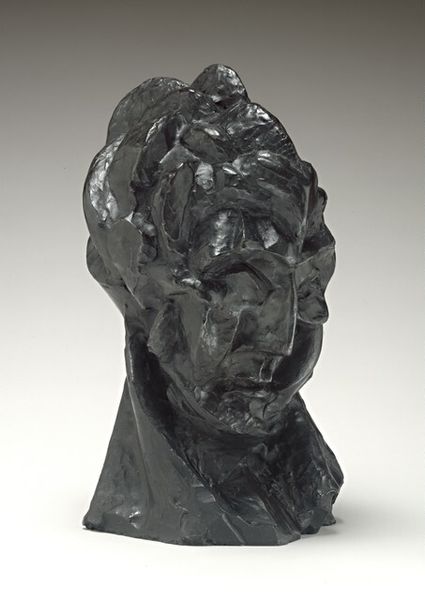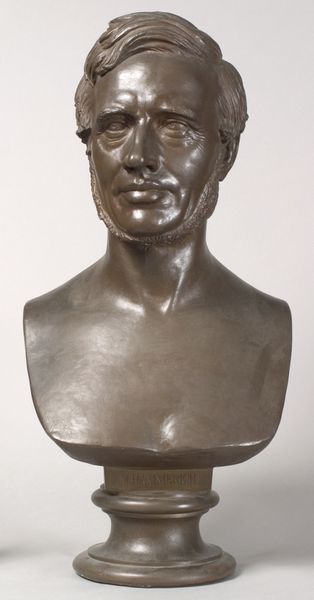
bronze, sculpture
#
portrait
#
cubism
#
bronze
#
figuration
#
sculpture
Dimensions: 17 x 8-15/16 x 10 in. (43.2 x 22.7 x 25.4 cm)
Copyright: No Copyright - United States
Curator: Standing before us is Raymond Duchamp-Villon’s 1911 bronze sculpture, “Head of Baudelaire,” currently housed at the Minneapolis Institute of Art. Editor: The patina! I am struck immediately by how smoothly the light flows over its curves, especially on the face. It has a luminous and almost ethereal quality that contrasts with the stark angles used to depict the facial structure. Curator: It’s interesting you point that out because the sharp angles certainly represent the influence of Cubism that Duchamp-Villon was experimenting with at the time. You have to consider Baudelaire's own disruptive role as a poet, challenging bourgeois norms. Doesn't this fractured portrait speak to the destabilizing power of his words, his championing of modernity and the marginalized? Editor: I agree about the destabilizing element, and the angles also provide some shading for contrast on an otherwise light piece. However, focusing primarily on external socio-historical narrative misses the innovative manipulation of form here. Note how the sculptor utilizes planes to dissect and reconstruct Baudelaire's face, almost like a machine part or a cog. It's about capturing the *idea* of a head, not simply its appearance. Curator: Absolutely, but reducing it purely to form neglects Baudelaire’s critical exploration of modernity and alienation that surely resonated within avant-garde circles like the Section d’Or to which Duchamp-Villon belonged. Doesn’t the distortion and fracturing also symbolize the psychological fragmentation that characterized early 20th century experience, explored through literature but expressed here through sculpture? Editor: Well, sure. But I contend that understanding this work’s success lies in recognizing how it reinterprets the human form into something wholly new using geometry to offer the mind, and consequently the eye, new modes of understanding form. Curator: I suppose we find ourselves again at the familiar intersection where lived reality meets abstraction! Ultimately this is the very nexus where great art happens: where meaning and feeling engage in dialectical tension. Editor: Perhaps we can both agree that "Head of Baudelaire" achieves something marvelous because it prompts endless engagement and reevaluation—not only of the artwork, but ultimately ourselves, too.
Comments
minneapolisinstituteofart almost 2 years ago
⋮
This work is one of several studies completed by the artist as part of an intended monument to the famed French poet and art critic Charles Baudelaire (1821-1867). Raymond Duchamp-Villon was the brother of the artists Jacques Villon (1875-1963) and Marcel Duchamp (1887-1968).
Join the conversation
Join millions of artists and users on Artera today and experience the ultimate creative platform.
